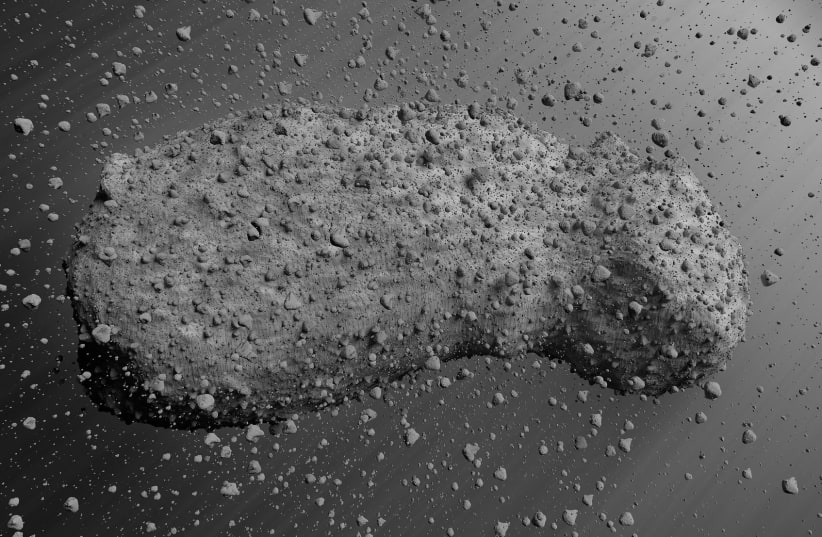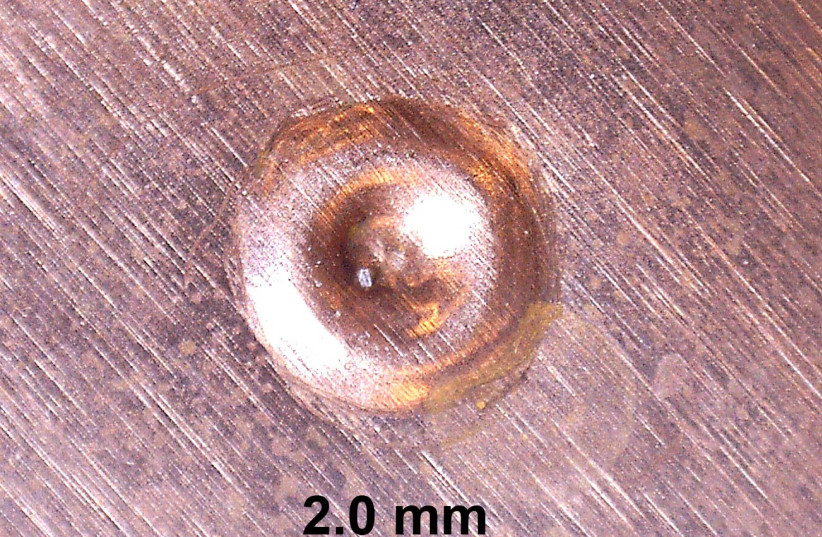Could the fact that asteroids may not be single monolithic masses of rock but rather are essentially big piles of rubble in any way help scientists protect the Earth from being devastated by an asteroid impact? According to a new study, it turns out that answer is yes.
The study in question, led by scientists from Curtin University, focused on the 500-kilometer-wide asteroid 25143 Itokawa, samples of which were brought back to Earth by the Hayabusa 1 probe launched by the Japan Aerospace Exploration Agency (JAXA).
The findings of this study were published in the peer-reviewed academic journal PNAS.
What are rubble pile asteroids?
A rubble pile is a term in astronomy for any celestial body, like an asteroid that is a literal pile of rubble, rather than a single dense rock.
These types of asteroids are formed when an asteroid or moon gets smashed to pieces, only for self-gravitation to slowly pull the pieces of rubble back together.
These asteroids also sometimes have another tell-tale sign: Shape.
Essentially, whenever one of these rubble pile asteroids passes by another even larger object, the gravitational pull will cause the loose rubble in the asteroid to shift around, essentially changing its shape.
What is especially interesting about them is that while rubble piles had been hypothesized to exist for years, it wasn't until recently that new evidence seems to indicate that they are far more common than previously believed.
For example, it isn't just Itokawa that has since been shown to be a rubble pile asteroid.
The massive nearly one-kilometer-long asteroid 162173 Ryugu, a sample of which was brought back to Earth by JAXA's Hayabusa2 mission, is also thought to be a rubble pile.
This is also the case for the 500-meter-wide asteroid 101955 Bennu, which NASA took a sample from with its OSIRIS-REx mission. At the time, the NASA spacecraft actually touched onto the surface of the asteroid and nearly sunk in through the surface.
Another notable asteroid thought to be a rubble pile is Dimorphos, a 170-meter-wide asteroid that was smashed into by a specially designed spacecraft as part of NASA's groundbreaking Double Asteroid Redirection Test (DART) Mission, which itself was an attempt at testing planetary defense against asteroid impacts.
The fact that these asteroids are rubble piles doesn't mean they are soft and harmless. These are still massive collections of rocks and minerals that have incredibly high mass. As such, an impact event from one of these asteroids would still be absolutely devastating to the planet.
How does knowing this help keep the Earth safe?
The study in question examined Itokawa and found that it seems that not only are rubble pile asteroids numerous, but they are also very old and very resilient.
Monolithic asteroids that are around 500 meters wide and residing in the asteroid belt tend to only survive there just a few hundred thousand years. But Itokawa is much older, having been formed after its parent asteroid was destroyed at least 4.2 billion years ago.
For context, the solar system itself is just around 4.5 billion years old.
So why has this asteroid survived for so long, outlasting so many others of its size?
To put it very simply, the asteroid itself acts as a sort of shock absorber, making it more resilient and very hard to destroy.
Not only that, but consider: The fact that this asteroid is so resilient because it's a rubble pile could itself infer that rubble pile asteroids are far more common than we thought.
So to sum it up, rubble pile asteroids can be huge. They are very durable and hard to destroy and they are abundant. And many of them, like Itokawa or Bennu, are considered potentially hazardous by NASA, meaning there is a chance they could one day theoretically impact the Earth.
That's the bad news. But here's the good part.
So asteroids might be rubble piles. How does this help stop an asteroid impact from destroying Earth?
This information has the potential to be a major game-changer for the field of planetary defense, and not in a bad way.
This is because it can help formulate necessary strategies for defending the Earth from an asteroid impact.
Consider the DART Mission. This spacecraft collided into Dimorphos, itself a rubble pile, and successfully managed to alter its trajectory. This means that planetary defense methods using deflection can still work.
However, it does still make a kinetic impact far less effective and efficient.
In addition, a flaw in the DART system has always been timing. There needs to be a considerable amount of time before the asteroid's path can be altered enough to avert a collision, and there is always a chance we might not see it in time.
But the fact that more asteroids are rubble piles presents an option that was previously cast aside as unfeasible and dangerous: Nukes.
While science fiction movies have often shown a brave team of heroes stopping an asteroid impact by destroying it with nuclear weapons, scientists have long considered this to be a terrible idea.
This is because, aside from issues of timing, this would only serve to shatter the asteroid, which would in turn send hundreds of thousands of smaller asteroids hurtling into the Earth and causing massive damage.
But if rubble pile asteroids are as resilient as they seem to be, that won't actually be an issue.
Instead, a nuclear blast could itself be used as a deflection by taking advantage of the asteroid's shock-absorber-like qualities.
The force of the nuclear blast would ripple through the asteroid and push it aside, but the asteroid's own durability would keep the pieces of the rubble pile from falling off and fragmenting as a result.
This is something that needs further study and testing, but it does show that using nuclear weapons to defend the Earth from an asteroid may still be a feasible and reasonable option.

